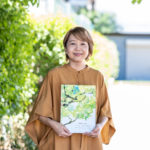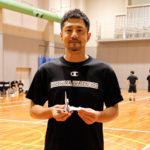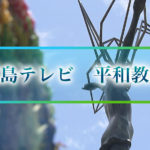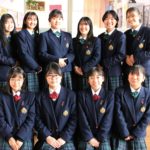Creating a place for collective reflection: The activities of Peace Club PeaCH
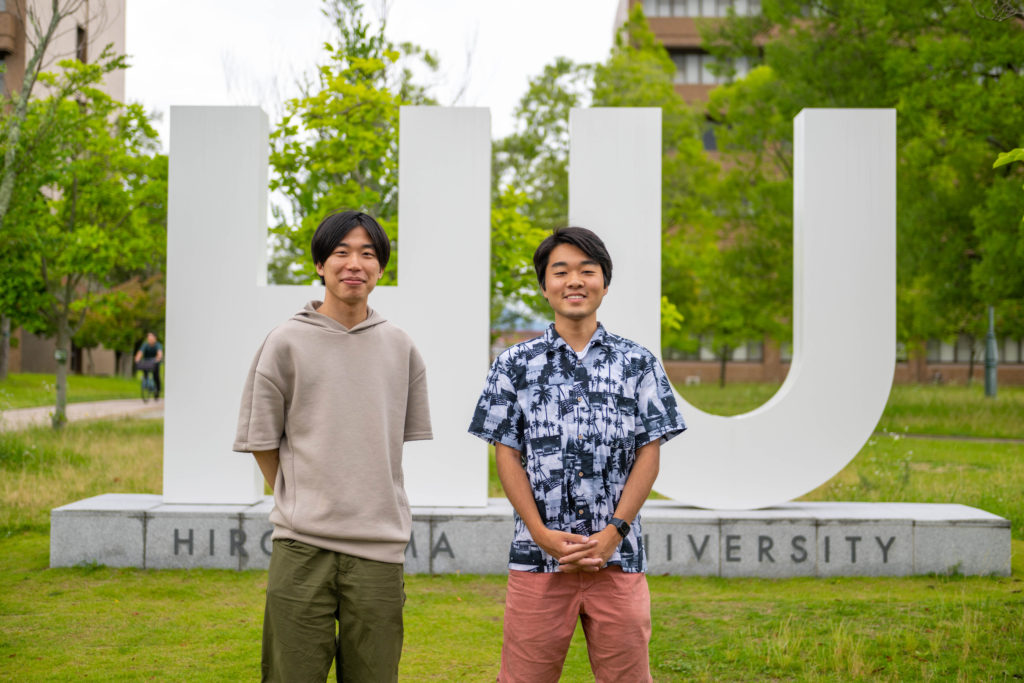
There is a club at Hiroshima University called Peace Club PeaCH, which plans and organizes a variety of peace-related events throughout the year and creates opportunities for young people to reflect on peace. Yamaguchi Hirotaka and Tanimoto Kazushi, representative and vice representative of the club, respectively, are keenly aware that they are the last generation who will get to hear directly from A-bomb survivors and often think about peace from a student’s perspective. We spoke to them about the activities of PeaCH, their thoughts on these activities, as well as their future plans.
Peace Club PeaCH was founded in 2019 and meets once a week for discussions and to plan and organize events of interest to its members. So far, the club has held events such as A-bomb testimony sessions to learn more about peace through first-hand accounts by A-bomb survivors and other survivors of the war, exhibitions of war materials at the university library, and other activities such as disseminating information on the theme of peace on social media.

Yamaguchi (right) and Tanimoto (left) graduated from the same high school. Even in high school, they had participated in peace-related activities as part of their student council activities.
When he first entered university, Yamaguchi participated in events organized by PeaCH. He then decided to join the club because he felt that it was important to have a place to reflect on peace and express his views. Tanimoto recalled that the invasion of Ukraine prompted him to reflect on peace again and eventually join the club.
Among their most important activities are A-bomb testimony sessions, where participants get to hear directly from A-bomb survivors regarding their own experiences. Speakers are invited from the Hiroshima Association for the Success of the Atomic Bomb Exhibition to share their experiences. At the session, the speaker recounts not only their experiences during the period of the bombing but also how they have lived their life ever since. “They also talk about how the war affected their lives. Because they share their stories with us in person, it touches us profoundly and creates valuable opportunities for us to reflect on peace once again,” Tanimoto explains.

Yamaguchi and Tanimoto want people to hear not only what was happening at the time but also how the war affected the lives of those who lived through it.
Last year, PeaCH organized a testimony session for students on a school excursion from a high school in Kanagawa Prefecture. After the session, the students were divided into groups for discussions, and each student presented their views on what peace looks like. The views shared were representative of the concerns of high school students, such as “being able to have meals as usual” and “not having fights.” “The definition of peace differs from person to person. It is important for participants to be able to express their views freely without being judged if they are right or wrong. We hope to offer a place and the opportunity for people to do just that at this club,” Tanimoto tells us.

Yamaguchi and Tanimoto hope to create a place for people to express their own views on war and peace as these subjects are hardly discussed in everyday conversation.
Besides these sessions, PeaCH has also organized “Hiroshima on That Day,” an exhibition held at the International Exchange Plaza linked to the university library that showcased war materials such as senninbari (“thousand-stitch belts” with a thousand knots stitched one by one using a red thread by many women on a piece of cloth to pray for the safety of soldiers going to war) and household goods such as watches that were exposed to the A-bomb and military uniforms borrowed from the Hiroshima Association for the Success of the Atomic Bomb Exhibition. The exhibition attracted not only students who dropped by in their spare time between classes but also residents of the neighborhood. A mosaic art exhibit was also set up at the university festival, in which the A-bomb Dome was painted on one wall and visitors were invited to complete the mosaic by pasting sticky notes with their comments on peace written on them. 500 people visited the exhibit over the two days of the festival, with 300 visitors leaving comments. PeaCH also enlisted the help of the international exchange club United Community to jointly organize the event “Let’s Make Issenyaki: The Predecessor of Okonomiyaki!” This event allowed international students and local residents to learn about the history of okonomiyaki in a quiz format, prepare issenyaki in a hands-on manner, and reflect on peace through food.



Activities conducted by PeaCH so far, including the mosaic art exhibit, A-bomb testimony sessions, etc.
“30% of the students at Hiroshima University come from Hiroshima Prefecture, and the remaining 70% come from other prefectures. After graduation, these students will leave for places all over Japan. Since they have an affinity with Hiroshima and will be spending a part of their lives here, I hope they will have the opportunity to learn about the A-bomb and reflect on peace,” Yamaguchi says. “As A-bomb survivors get older, we are faced with the question of how to pass on their stories. However, we would like to focus on activities that we can implement right now to directly bring the voices of these survivors to more people. No matter what someone’s views on peace may be, I hope they can start reflecting on peace to begin with. Nothing is worse than apathy where peace is concerned,” Tanimoto explains the point of their activities.
Peace Club PeaCH will continue to plan various projects moving forward. Indeed, the first step toward achieving peace is to create opportunities and places where each individual can reflect on what peace means to them and express their views.

■Peace Club PeaCH
Instagram: hiroshima_peace2
https://www.instagram.com/hiroshima_peace2/
Tags associated with this article



